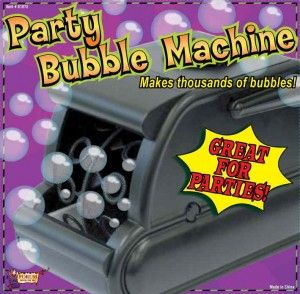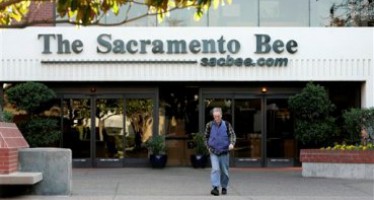Sustainability ideology invented a stagnant California Dream
By Wayne Lusvardi
When did the California Dream begin?
Peter Huck, a refugee journalist from Los Angeles to New Zealand, has an answer. He writes in the July 20 issue of the New Zealand Herald newspaper “Sustainability Reinventing California Dream” that the California Dream began when Los Angeles Department of Water and Power’s William Mulholland said at the 1913 opening of the California Aqueduct: “There it is, take it.”
Huck believes that “sustainability” will lead to an economic recovery in California.
But the California Dream may have ended with California’s Anti-Sprawl Law, Senate Bill 375, which Huck champions in his article as an economic stimulus to get the state out of a managed depression.
More recently, the County of San Bernardino in California has proposed to use eminent domain to condemn mortgages on “over-mortgaged” homes. The county would do this by spreading about 30,000 over-mortgaged loans to all 699,000-property owners in the county by way of additional property taxes.
If there is a new slogan for California nearly 100 years after Mulholland’s epic statement, it is: “Socialize losses and privatize gains.” Which is another way of saying: “Everyone wants out of bubble-created debts, but no one wants to pay for them except through more bubbles.”
Yet no one in San Bernardino has apparently realized that reducing the over-mortgaged portion of home loans will just lower assessed property values and drastically reduce property tax revenues. Mass delusion is starting to spread across desperate California just as the Tulip Bulb Mania, the South Seas Bubble and the Mississippi Bubble followed the debt bubbles of the 1700’s in Europe and early America.
“Sustainable” Transit Will Result in Unsustainable Water
Having handled land use for a regional water agency in California for 20 years, I find that Huck has focused on the ideological level of explanation, rather than the empirical.
Contrary to Huck, steering population and housing into coastal cities in California will result in an unsustainable use of water resources. Infill housing near urban job centers may result in fewer auto emissions from auto commuting. But diverting population growth to dense urban cities will also force greater reliance on imported water supplies from the Sacramento Delta and the Colorado River. California’s cities depend on groundwater for about one third of their water during dry years.
What has historically made water valuable in California has been the relative cheapness of water from urban groundwater basins compared to expensive imported water.
The anti-sprawl law will require that cities adopt sustainable growth plans to shift new development from the urban fringe, where groundwater resources are more abundant, to highly dense urban areas, where local water supplies are patchy and often polluted from war time industrial toxic wastes. It would take decades, if ever, to clean up polluted urban groundwater basins.
Viewing a map of groundwater basins and a map of housing density for California indicates that water and populations are not geographically proximate. The densest populated areas are mostly along the coast while most groundwater resources are inland.
Moreover, by virtue of shifting to reliance on imported water supplies, California will need to buy more imported electricity to pump that water to urban centers located far from the sources of water. Will expensive Green Power mostly be used to pump water long distances? Or will Green Power be dedicated to powering the proposed California High-Speed Rail Authority?
Solar power can only be used in mid-to-late daytime; while wind power mostly peaks at night. But neither can be relied on for non-peak load power uses — homes, industries, hospitals, and public transit — because they are unreliable and thus unsustainable.
How Cal Energy Crisis Resulted in “Sustained” Drought
In 2001, this writer was a member of an Energy Crisis Task Force for a large regional government water utility. The original cause of the California Energy Crisis of 2001 was the 1996 Federal Environmental Protection Agency “mandate” to California to clean up urban smog by 2001 or face a cut off of highway and education funds.
The only way to comply with the federal mandate was to shut down old polluting fossil-fuel power plants along the California coast owned by Pacific Gas & Electric, San Diego Gas & Electric, and Southern California Edison companies. Then these obsolescent power plants had to be divested to private operators and converted to cleaner natural gas fuel power plants.
California was not running out of energy in 2001; it was running out of clear sky. The real crisis was not energy, but how to pay off the old stranded or “underwater” mortgages — called corporate bonds — on the mothballed power plants. Everybody wanted smog eliminated, but no one wanted to pay for it. Federal environmental policy became “clean air at any cost.”
The initial energy crisis solution in 2001 was to give a quasi-monopoly to natural gas suppliers, mainly in Texas, to try to pay off the bonds on the old power plants. This policy was erroneously called “deregulation,” which failed. The plug was pulled on deregulation by the Democratic legislature and governor and replaced with a system of energy price caps.
Retail electricity prices were eventually capped; but wholesale energy prices were not resulting in an induced energy pricing fever. This bubble in energy prices was intentionally created to pay off the unpaid mortgages on the mothballed power plants. But it also failed miserably and even resulted in some fatalities.
Finally, some $42 billion in mortgages were paid off by energy price premiums loaded into long-term energy contracts mainly to run the pumps for the California State Water Project. Smog reduction was paid for by inflated water rates.
By 2007, a man-made drought resulted from an environmental lawsuit to protect the purportedly endangered Delta Smelt fish in the Sacramento Delta. In 2010, an appeals court ruled that the allegation that the Smelt was endangered was bogus.
By manufacturing a drought, California not only protected a bubble in water rates that securitized the pay off of long-term bonds to reduce smog, but also brought about even higher water rates. These higher local water rates have not been repealed anywhere in California after the court-ordered drought was ended in 2010.
California Politician’s Dream Come True: “Taxation without Representation and Limitation”
Loading the cost to clean up the air into water contracts avoided having to go to the California Public Utilities Commission for an electric rate increase, to the Legislature for a tax increase, or to the voters for the approval of a tax increase, as required under Proposition 13. To politicians, it was a California Dream come true: ”taxation without representation and limitation.” But it led to economic stagnation.
Long-term water contracts expire in 2013, when AB 32, the California Global Warming Solutions Act of 2006, kicks in. In other words, in 2013 California will no longer pay premiums loaded into the price of water to pay off the cost to reduce smog.
But a replacement premium will be added to electricity rates to pay for the mandatory shift to expensive Green Power. Solar and wind power located in remote areas is supposed to reduce urban air pollution but will add transmission costs.
This will prevent the building of new conventional power plants in urban areas where smog is trapped in urban air basins. It isn’t solely pollutants that cause smog, but the trapping of pollutants in air basins. The solution to pollution is dilution and dispersion — not anti-sprawl legislation that will concentrate more people in dense urban air basins who will travel to work in bullet trains subsidized by Cap and Trade taxes disguised as a pollution emissions market.
Moreover, back up conventional power plants will have to cycle up and down as the sun shines or clouds cover the sun and the wind gusts. Power-plant “cycling” will cause more air pollution as surely as pushing your gas pedal up and down constantly in your car or frequently moving your home thermostat will do the same.
The California Energy Crisis of 2001 ended up loading the huge cost to reduce smog into premiums in water rates. That, in turn, resulted in the necessity of an artificial drought. Instead of building more dams, reservoirs and pipelines, the only way left to manage water supplies was by conservation. California had to protect its water-rate bubble, and thus had to squelch any new water development or water markets for over a decade. It needed a “sustainability” ideology to legitimate its conservation policy. “Sustainability” is just public “hucksterism” if you will forgive the pun.
California may finally put an $11 billion water bond on the election ballot in 2014, coincidentally after the bonds on the California Energy Crisis of 2001 are paid off.
The Solution to Bubbles is Not More Bubbles
In Michael Lewis’ pop economics book, “Boomerang: Travels in the New Third World,” he describes the blowback from Greece’s debt-created bubble. All Greeks wanted the national debt reduced, but nobody wanted to pay for it.
Greece tried to load its unpaid national debt into electric power rates. This only resulted in ratepayers refusing to pay their electricity bills and falling revenues for the state utility agency. The result was power blackouts, disinvestment by the bond market and social and political destabilization. Should we expect anything less from California’s loading of the cost to reduce air pollution in water rates securitized by water conservation and legitimated by a “sustainability” ideology?
Contrary to Peter Huck, a “sustainability” ideology will not result in an economic recovery for California. The future of California’s economy is more likely to be slow growth due to having to pay down the private sector mortgage-debt bubble and the public sector’s pension, redevelopment and air quality-water rate bubbles.
Creating new tax bubbles by condemning “underwater” mortgages, by Cap and Trade “tax farming,” and by inflating Green Power rates, will only assure the older bubbles will be replaced with new ones. California band musician Lawrence Welk famously invented “the Bubble Machine.” But perhaps comedian Stan Freberg was prophetically right when he recorded his spoof of the Lawrence Welk Show by saying it was time to “turn off the bubble machine?”
Related Articles
McClintock: Water Actually 'Abundant'
JUNE 2, 2011 By JOHN SEILER The history of California practically is the history of water. So it’s not surprising
Victorville bond bust brings SEC lawsuit
May 31, 2013 By Wayne Lusvardi A recent lawsuit filed by the Securities and Exchange Commission alleged Victorville city officials and
Critics charge flap reveals Sac Bee’s pro-arena agenda
Critics have taken issue with the Sacramento Bee’s coverage of a Sacramento arena deal. Last Thursday, the Bee featured a story




